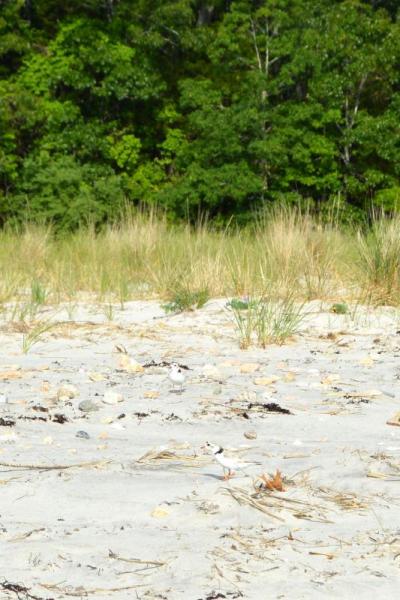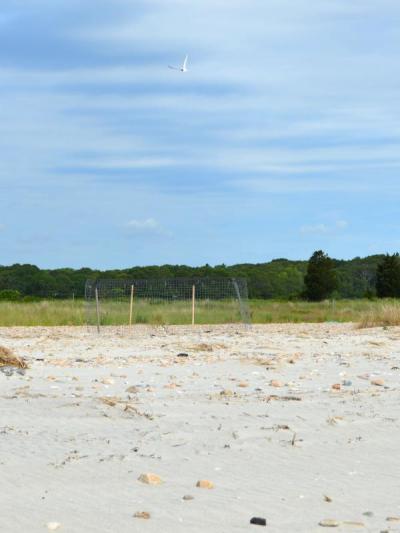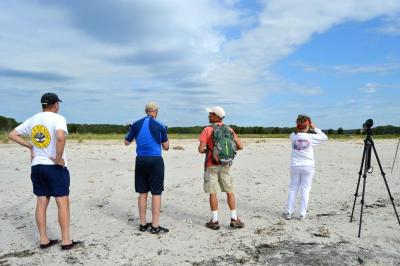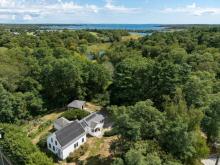Threatened bird shows signs of new life

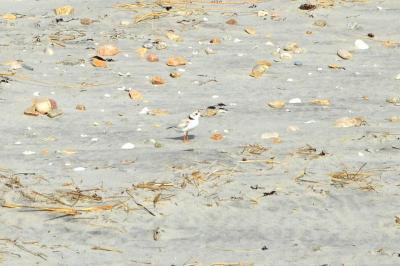
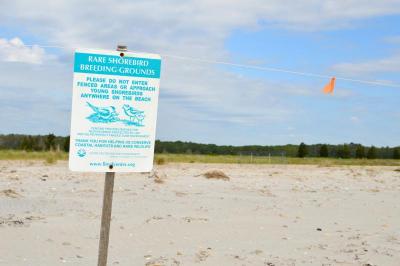
Somehow, among the rocks, twigs and broken seashells scattered around the beach at Demarest Lloyd State Park, Jamie Bogart can spot a nesting piping plover from several yards away. It’s an impressive feat considering the birds’ plumage is nearly identical in color to the sand.
Equipped with a sighting scope and a pair of binoculars, Bogart leads ornithology enthusiasts out in search of shorebirds and other species throughout the year. This month, his birding walk centered on the Atlantic coast piping plover, a bird that’s been protected by the Endangered Species Act since 1986.
“It takes hours and hours just to find a nest,” said Bogart. “The trained eye can miss the bird. If you don’t have someone to point these birds out, you’re not going to see them.”
Part of Bogart’s job as a research associate for the Lloyd Center for the Environment is to locate and count the number of nesting birds in the area. He said that he and his interns meticulously record details, monitoring every egg and every hatchling. That data helps determine the success or failure of the plover population in a given year.
The birds have been designated as threatened by the U.S. Fish and Wildlife Service, meaning their population is so low that they would become endangered without protection under the Endangered Species Act. Because of this, great care is taken to ensure the plovers’ nesting season runs smoothly.
“The nice thing about Demarest is that it has endangered species, but it’s at the mouth of an estuary and close to the nearby forest. It’s a nice, pristine area for the birds,” said Bogart.
Piping plovers nest by the coast, usually in flat, sandy beaches. Rather than building a structure made from grass, the birds lay eggs in a small hole scraped out from the sand. The eggs look like a small, round stone, and because they resemble a feature in the environment, it’s easy for humans to mistakenly crush them while walking along the shore.
To prevent the public from compromising the nests, a portion of the beach has been fenced off.
“The birds arrive in mid-March and then start nesting by the third week in April. Fencing is going up in early April and will be up until mid-August when the last chicks have hatched and the birds have fled,” said Bogart.
With the fence in place, the main concern for plovers shifts from human activity to natural predators, like foxes, crows and coyotes. To fend off these threats, some nests are encased in a metal enclosure. Plovers can come and go, but predators are too large to enter.
Bogart said that earlier this season, the first round of plover nests were unsuccessful. However, the species will continue to lay eggs until it manages to produce a hatchling.
During his birding walk on Saturday, newly hatched plovers were spotted scuttling along the shoreline. The baby birds run around their nest soon after they’re born, staying close to their parents. Their downy is a light brown, making them challenging to spot without binoculars.
Joann Tschaen, who attended the walk, was delighted while watching the nestlings learn how to walk.
“There are so many species of birds that we have in our area that we often don’t see unless we pause to take a look. It helps to go on an exploration with people who know nature and understand wildlife and how to help us enjoy it more,” said Tschaen.
“For me, this is a wonderful way to get out of the city and learn,” she added.
Bogart thinks that if others came to view the nesting birds, they would understand the importance of protecting the animal.
“People who see the fenced-in areas don’t often see the birds,” Bogart said. “That’s what you want people to see because they’re not really aware that it’s out there.”




